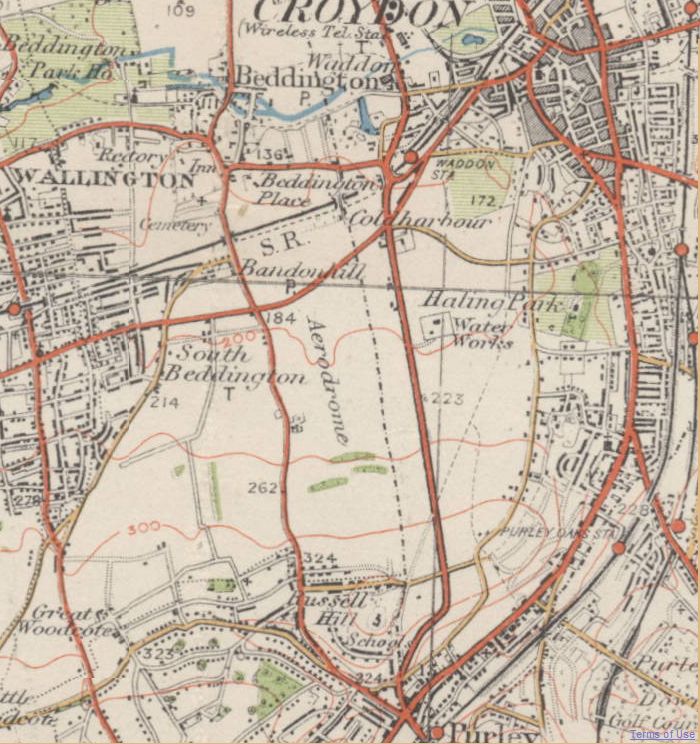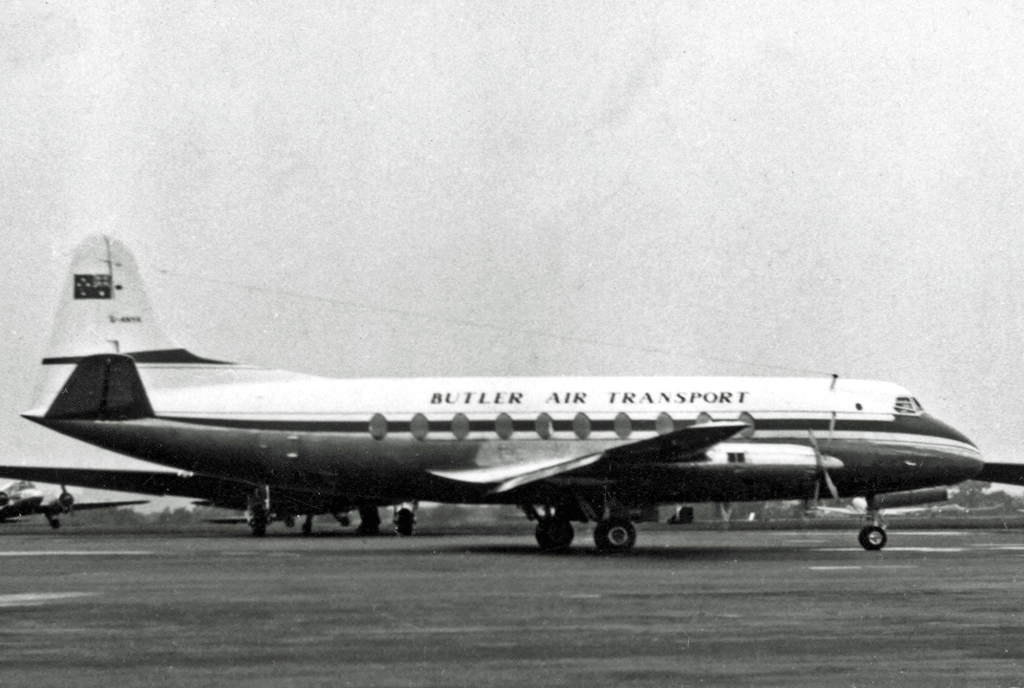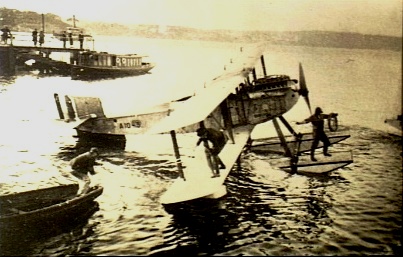|
Harry Frank Broadbent
Harry Frank "Jim" Broadbent (25 March 1910 – 9 November 1958) was a British pilot largely raised in Australia, who took part in air racing and record-breaking flights in the 1930s. Early life Broadbent was born in Chiswick on 25 March 1910 as Harry Frank Gibbs. His father, Joseph Gibbs, was a singer and actor whose stage name was Frank Harwood. His mother, Madge Adelaide, was the youngest daughter of Kate and Harry Rickards, prominent figures in the theatrical life of Australia. He was educated at Wychwood School, Bournemouth. Harry moved to Australia after his parents' divorce, and in 1923 his mother married John Allan Broadbent, of Windella station, Narrandera, NSW. Harry then preferred to use the name 'Jim Broadbent'. He received flight training as a member of the Sydney Aero Club, and gained a private pilot's licence on 20 November 1929.Isaacs, Keith. 'Broadbent, Harry Frank (Jim) (1910–1958)Australian Dictionary of Biography, National Centre of Biography, Australian Natio ... [...More Info...] [...Related Items...] OR: [Wikipedia] [Google] [Baidu] |
Chiswick
Chiswick ( ) is a district of west London, England. It contains Hogarth's House, the former residence of the 18th-century English artist William Hogarth; Chiswick House, a neo-Palladian villa regarded as one of the finest in England; and Fuller's Brewery, London's largest and oldest brewery. In a meander of the River Thames used for competitive and recreational rowing, with several rowing clubs on the river bank, the finishing post for the Boat Race is just downstream of Chiswick Bridge. Old Chiswick was an St Nicholas Church, Chiswick, ancient parish in the county of Middlesex, with an agrarian and fishing economy beside the river; from the Early Modern period, the wealthy built imposing riverside houses on Chiswick Mall. Having good communications with London, Chiswick became a popular country retreat and part of the suburban growth of London in the late 19th and early 20th centuries. It was made the Municipal Borough of Brentford and Chiswick in 1932 and part of Greater Lon ... [...More Info...] [...Related Items...] OR: [Wikipedia] [Google] [Baidu] |
Croydon Airport
Croydon Airport (former ICAO code: EGCR) was the UK's only international airport during the interwar period. Located in Croydon, South London, England, it opened in 1920, built in a Neoclassical style, and was developed as Britain's main airport, handling more cargo, mail, and passengers than any other UK airport at the time. Innovations at the site included the world's first air traffic control and the first airport terminal. During World War II the airport was named RAF Croydon as its role changed to that of a fighter airfield during the Battle of Britain; and in 1943 RAF Transport Command was founded at the site, which used the airport to transport thousands of troops into and out of Europe. After the Second World War, its role returned to civil aviation, but the role of London's primary international airport passed to London Heathrow Airport. Croydon Airport closed in 1959. It had been known under eight different names while it was active. In 1978, the terminal buildin ... [...More Info...] [...Related Items...] OR: [Wikipedia] [Google] [Baidu] |
Butler Air Transport
Butler Air Transport was an Australian airline founded by C. Arthur Butler to operate air transport primarily among New South Wales airports in Australia, from 1934 until 1959.Butler, Cecil Arthur (1902–1980) , accessed 4 July 2011Butler Air Transport Co (1934–1959) Guide to Australian Business Records, accessed 4 July 2011 History [...More Info...] [...Related Items...] OR: [Wikipedia] [Google] [Baidu] |
Flores
Flores is one of the Lesser Sunda Islands, a group of islands in the eastern half of Indonesia. Including the Komodo Islands off its west coast (but excluding the Solor Archipelago to the east of Flores), the land area is 15,530.58 km2, and the population was 1,878,875 in the 2020 Census (including various offshore islands); the official estimate as at mid 2021 was 1,897,550. The largest towns are Maumere and Ende. The name ''Flores'' is the Portuguese and Spanish word for "Flowers". Flores is located east of Sumbawa and the Komodo islands, and west of the Solor Islands and the Alor Archipelago. To the southeast is Timor. To the south, across the Sumba Strait, is Sumba island and to the north, beyond the Flores Sea, is Sulawesi. Among all islands containing Indonesian territory, Flores is the 10th most populous after Java, Sumatra, Borneo ( Kalimantan), Sulawesi, New Guinea, Bali, Madura, Lombok, and Timor and also the 10th biggest island of Indonesia. Until the arr ... [...More Info...] [...Related Items...] OR: [Wikipedia] [Google] [Baidu] |
Percival Vega Gull
The Percival Vega Gull was a 1930s British, four-seater touring aircraft built by Percival Aircraft Limited. It was a single-engine, low-wing (Folding), wood-and-fabric monoplane with a fixed tailwheel undercarriage. Design and development Built by Percival Aircraft of Gravesend and Luton (after 1936 when Percival Aircraft became a Limited Company), the 'K-Series' Vega Gull was a development of their earlier 'D-Series' Gull. The main changes from the earlier design were the provision of a fourth seat, dual controls and flaps. The fuselage was widened and the wingspan increased. Increases in drag were compensated for by reducing parasitic drag from exterior fittings such as hinges and actuation horns. This work was largely attributable to the arrival at Percivals of the talented aircraft designer Arthur Bage. Thus, the Vega Gull was very nearly as fast as the more svelte Gull Six. Payload, range and utility were all much improved. The prototype ''G-AEAB'' first flew from Gra ... [...More Info...] [...Related Items...] OR: [Wikipedia] [Google] [Baidu] |
RAF West Freugh
RAF West Freugh is a former Royal Air Force station located in Wigtownshire, south east of Stranraer, Dumfries and Galloway, Scotland. It has always been an armaments training school, either for handling or deployment of ordnance. The site is now known as MOD West Freugh and is operated by defence contractor QinetiQ, on behalf of the Ministry of Defence. History During the First World War the site was a base for naval airship An airship or dirigible balloon is a type of aerostat or lighter-than-air aircraft that can navigate through the air under its own power. Aerostats gain their lift from a lifting gas that is less dense than the surrounding air. In early ...s, known as RNAS Luce Bay. The base was provided with one huge airship hangar. RAF West Freugh opened in 1937 as an armament training camp. During the World War II, Second World War, it expanded to include training facilities for observers, navigators, and bomb aimers; and served as a base for the Bombing ... [...More Info...] [...Related Items...] OR: [Wikipedia] [Google] [Baidu] |
Heston Aerodrome
Heston Aerodrome was an airfield located to the west of London, England, operational between 1929 and 1947. It was situated on the border of the Heston and Cranford areas of Hounslow, Middlesex. In September 1938, the British Prime Minister, Neville Chamberlain, flew from Heston to Germany three times in two weeks for talks with Adolf Hitler, and returned to Heston from the Munich Conference with the paper referred to in his later "Peace for our time" speech from 10 Downing Street. History Private flying Heston Air Park was conceived by fellow pilots and aircraft co-owners Nigel Norman and Alan Muntz in 1928, and it was constructed by their new company, Airwork Ltd. It was officially opened on 5 July 1929, to coincide with hosting the two-day King's Cup air race. By then, the Airwork Flying School had become well established, many privately owned aircraft had moved in, and the Household Brigade Flying Club, also known as the Guards flying club, had moved from Brooklands. Freq ... [...More Info...] [...Related Items...] OR: [Wikipedia] [Google] [Baidu] |
British Aircraft Double Eagle
The British Aircraft B.A.IV Double Eagle was a British twin-engined six-seater monoplane designed and built by the British Aircraft Manufacturing Company of London Air Park, Hanworth, England. Design and development The Double Eagle was a twin-engined high-wing monoplane with a retractable landing gear, the main gear retracting backwards into the engine nacelles.Jackson 1973, page 295 The first aircraft (Y-1) was powered by two 130 hp (97 kW) de Havilland Gipsy Major engines, and it first flew from Hanworth on 3 July 1936, later registered G-ADVV. The second aircraft (G-AEIN) was fitted with two de Havilland Gipsy VIs. Three aircraft were built, although one citation is claimed to say that only two Double Eagles were produced, and that both were impressed by the RAF. Operational history In 1940, the first aircraft (G-ADVV) was impressed into the Royal Air Force as ES949, and was finally used as an instructional airframe by Armstrong-Whitworth, and later Parnall. O ... [...More Info...] [...Related Items...] OR: [Wikipedia] [Google] [Baidu] |
Lympne Airport
Lympne Airport , was a military and later civil airfield , at Lympne, Kent, United Kingdom, which operated from 1916 to 1984. During the First World War RFC Lympne was originally an acceptance point for aircraft being delivered to, and returning from, France but was later designated as a First Class Landing Ground, RAF Lympne. It became a civil airfield in 1919 and saw the operation of early air mail services after the 1918 armistice. It was one of the first four airfields in the United Kingdom with customs facilities. Lympne was also involved in the evolution of air traffic control, with facilities developing and improving during the 1920s and 1930s. A number of record-breaking flights originated or ended at Lympne. During the 1920s Lympne was the venue for the Lympne light aircraft trials from which a number of aircraft types entered production. Air racing was also held at Lympne. Just before the Second World War, Lympne was requisitioned by the Fleet Air Arm. It was named H ... [...More Info...] [...Related Items...] OR: [Wikipedia] [Google] [Baidu] |
De Havilland Leopard Moth
The de Havilland DH.85 Leopard Moth is a three-seat high-wing cabin monoplane designed and built by the de Havilland Aircraft Company in 1933. Design and construction It was a successor to the DH.80 Puss Moth and replaced it on the company's Stag Lane and later Hatfield production lines. It was similar in configuration to the earlier aircraft, but instead of a fuselage with tubular steel framework, a lighter all-plywood structure was used which allowed a substantial improvement in range, performance and capacity on the same type of engine. The pilot is seated centrally in front of two side-by-side passengers and the wings can be folded for hangarage. Operational history The prototype first flew on 27 May 1933 and in July won the King's Cup Race at an average speed of 139.5 mph (224.5 km/h), piloted by Geoffrey de Havilland. A total of 133 aircraft were built, including 71 for owners in the British Isles, and 10 for Australia. Other examples were exported to France ... [...More Info...] [...Related Items...] OR: [Wikipedia] [Google] [Baidu] |
De Havilland Tiger Moth
The de Havilland DH.82 Tiger Moth is a 1930s British biplane designed by Geoffrey de Havilland and built by the de Havilland Aircraft Company. It was operated by the Royal Air Force (RAF) and other operators as a primary trainer aircraft. In addition to the type's principal use for ''ab initio'' training, the Second World War had RAF Tiger Moths operating in other capacities, including maritime surveillance and defensive anti-invasion preparations; some aircraft were even outfitted to function as armed light bombers. The Tiger Moth remained in service with the RAF until it was replaced by the de Havilland Chipmunk during the early 1950s. Many of the military surplus aircraft subsequently entered into civilian operation. Many nations have used the Tiger Moth in both military and civilian applications, and it remains in widespread use as a recreational aircraft. It is still occasionally used as a primary training aircraft, particularly for those pilots wanting to gain exper ... [...More Info...] [...Related Items...] OR: [Wikipedia] [Google] [Baidu] |
Oswald Watt Gold Medal
The Oswald Watt Gold Medal is an Australian aviation award named for Oswald Watt (1878–1921), a decorated pilot in World War I. It originated in 1921 after the death of Oswald Watt and is awarded for "A most brilliant performance in the air or the most notable contribution to aviation by an Australian or in Australia" by the Royal Federation of Aero Clubs of Australia. As it is awarded on merit it is not an annual award; between the award's creation and 1999 it had been awarded a total of 48 times. It was not awarded in the years 2000 - 2010. Recipients The recipients are:Oswald Watt Gold Medal winners list Royal Federation of Aero Clubs of Australia. Retrieved 9 October 2019 *1921 Francis Stewart Briggs – flew from Melbourne to Brisbane and from Melbourne to P ... [...More Info...] [...Related Items...] OR: [Wikipedia] [Google] [Baidu] |




.jpg)


